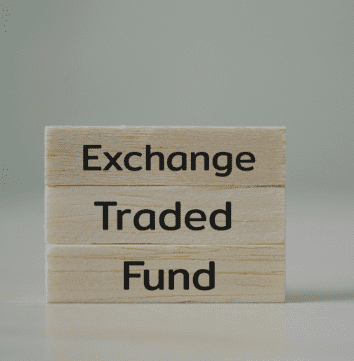
Blog
ETFs Part I: The Basics
PINE Advisor Solutions | 8 November 2024
This article is the first of three parts, aiming to provide a fundamental overview of exchange-traded funds ("ETFs"), including what they are and how to launch and run one. There’s no doubt that ETFs have been garnering many headlines and gathering lots of assets. In this article series, we will discuss the ins-and-outs of the wrapper that has been the pique of interest, offering a comprehensive look at both the advantages and considerations involved in ETF investing.
First, we will look behind the ETF structure, and answer questions like how it compares to traditional mutual funds, who are the actors participating, and what are the potential benefits of using the ETF for investing. By exploring the mechanics and key legislation related to ETFs, we aim to clarify their unique features and the role they can play within a diversified investment portfolio.
Exchange-traded funds and mutual funds are both popular investment vehicles with similarities in structure and regulations but significant differences in how they operate, are accessed by investors, and manage costs. ETFs, which have grown substantially in popularity since the SEC’s Rule 6c-11 was adopted in 2019, now offer a streamlined path for issuers through reduced barriers to entry, such as lower legal fees, faster market entry, and flexible seeding amounts.
Both ETFs and mutual funds may be registered under the Securities Act of 1933 and the Investment Company Act of 1940, or in some cases, under only one of these acts. For years, ETFs required specific exemptive relief to operate similarly to mutual funds in structure and function. Further regulatory clarity came with Rule 18f-4, focusing on derivatives used within these funds.
Structural Similarities and Differences
Like mutual funds, ETFs are registered funds that contain a basket of securities under a single ticker and calculate Net Asset Value (“NAV”) at the end of each trading day. However, there are key distinctions between the two:
1. Trading Mechanism
- Mutual Funds: Mutual funds trade once per day at the NAV calculated after the market closes. When shareholders purchase or sell shares, these shares are created or redeemed by the fund itself, requiring cash transactions that trigger buying or selling within the fund's portfolio.
- ETFs: ETFs trade on an exchange throughout the day, enabling investors to buy and sell shares at market prices. Shares are created or redeemed in large blocks by institutions, who then distribute them to market makers for bid-ask posting. This arbitrage mechanism allows market prices to stay close to NAV.
2. Creation and Redemption Process
- Mutual Funds: Shares are typically purchased in cash, leading to transactional activity within the fund to align holdings with investor demand.
- ETFs: Allow for in-kind transfers (the exchange of securities instead of cash), creating tax efficiency by passing any capital gains tax liability to the Authorized Participants, rather than impacting the fund’s shareholders.
3. Share Classes and Minimum Investment
- Mutual Funds: Offer multiple share classes, often requiring different
investment minimums and fee structures. - ETFs: Typically have a single share class with a minimum investment of one
share, plus standard brokerage fees, providing uniform access for investors.
Benefits of ETFs for Investors
The structural differences outlined above grant ETFs distinct advantages over mutual funds:
- Trading Flexibility: Listed on exchanges, ETFs can be bought and sold throughout the trading day, unlike mutual funds, which trade only once per day. This enables investors to use different order types, such as limit or stop-loss, short sell, or buy on margin.
- Cost Effectiveness: ETFs generally have lower management fees, with no sales loads, contingent deferred sales charges, or redemption fees. Though ETFs often allow for a 12 b- 1 fee, they are rarely charged. While there are brokerage fees, overall costs for ETF investors tend to be lower.
- Tax Efficiency: The in-kind creation and redemption process enables ETFs to minimize capital gains distributions. Shareholders owe taxes only upon selling their shares, rather than when the fund sells portfolio securities.
- Transparency: Many ETFs disclose their portfolio holdings daily before the market opens, supporting arbitrage and allowing investors greater insight into the fund’s composition and market movements.
Conclusion
The enhanced regulatory framework, tax efficiencies, and trading flexibility offered by ETFs present significant advantages for fund issuers looking to enter the market with a competitive product. With reduced barriers to entry under SEC Rule 6c-11, issuers can more readily introduce ETFs that appeal to a broad investor base seeking cost-effective, transparent, and tax-efficient investment options. By understanding the distinctions between ETFs compared to other wrappers, issuers are well-positioned
to design and deliver innovative ETF offerings that meet the evolving needs of today’s investors.
Look out for Part 2 of this three-part ETF series in our Q1 2025 newsletter, where we will explore the launch process for an ETF and Part 3 in our Q2 2025 newsletter will share our thoughts on what to consider when running an ETF. In the meantime, reach out to your PINE contact with any questions, and we can provide tailored insights and guidance based on your individual needs.